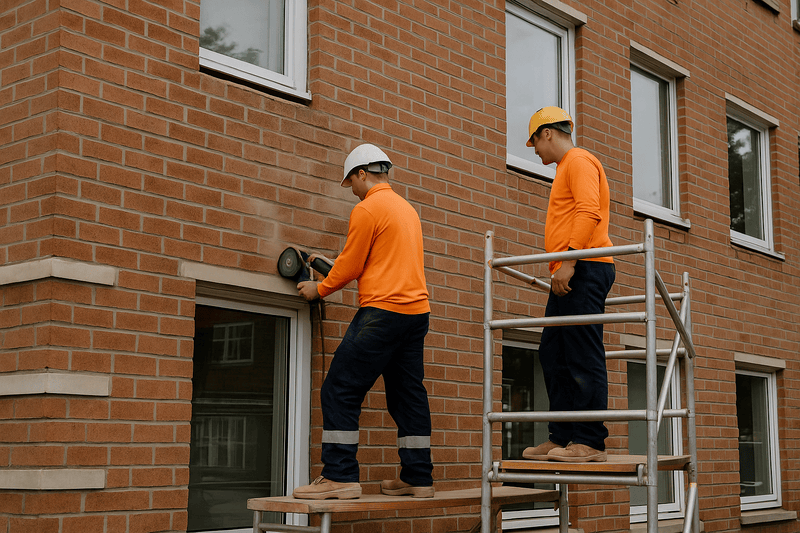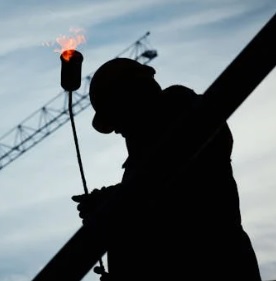
Structural issues don’t always show up as collapsed balconies or crumbling concrete. Sometimes, the first signs are far more subtle — cracked render, leaking windows, lifting tiles, or persistent damp patches. Left unchecked, these minor clues can lead to major expenses. That’s why remedial building services have become an essential part of property maintenance across Australia — especially in aging apartment complexes, commercial buildings, and coastal structures exposed to harsh conditions.
But what exactly do remedial builders do? Why is this work so critical? And how do you choose the right team to inspect, diagnose, and repair before problems escalate?
This guide explains how remedial building services help safeguard buildings from long-term damage, improve compliance, and extend the life of key assets — and why ignoring early warning signs may cost more than you think.
What Are Remedial Building Services?
Remedial building work refers to the repair and restoration of existing structures — specifically focused on addressing defects, damage, or non-compliant construction elements. Unlike general renovations, which often focus on aesthetics or upgrades, remedial works target structural integrity, waterproofing, and compliance.
Typical services include:
- Concrete cancer treatment and patching
- Waterproofing membrane replacement
- Balcony and balustrade repairs
- Brickwork and facade restoration
- Fire rating upgrades
- Window and door replacements
- Building movement and crack repairs
- Strata and commercial compliance work
Essentially, if a structure is failing or no longer compliant with building codes, remedial specialists step in to investigate and rectify the issue. Firms offering expert remedial construction solutions work closely with engineers, strata managers, and building owners to provide practical, long-term fixes that prevent recurring damage.
Common Warning Signs That Call for Remedial Work
Property owners and managers are often caught off guard by how quickly structural issues develop. Here are some of the most common symptoms that may indicate deeper problems:
- Cracks in internal walls, ceilings, or facades
- Rust staining or concrete spalling (also known as concrete cancer)
- Water ingress around windows, balconies, or rooftops
- Efflorescence (white powdery deposits) on brick or concrete surfaces
- Doors or windows that no longer align properly
- Loose or deteriorating balustrades
- Failing waterproofing in bathrooms or rooftop membranes
- Poor drainage around foundations or basements
If you spot these red flags, engaging trusted remedial builders early could mean the difference between a targeted repair and a full-scale replacement.
For more examples of building issues caught early thanks to professional inspections, Blogrip’s construction case studies feature real-life examples of how strata properties avoided costly structural failures through proactive remediation.
Why Strata and Commercial Buildings Rely on Remedial Builders
Multi-unit residential buildings and commercial properties face unique challenges. They’re subjected to constant wear and tear, regulatory scrutiny, and shared ownership structures that require transparent, cost-effective solutions.
Here’s how remedial builders help:
- Strata compliance: Many older strata complexes no longer meet today’s fire, safety, or waterproofing standards. Remedial services bring them up to code without complete rebuilds.
- Facade maintenance: Concrete and brick facades may suffer from weather damage, UV exposure, and corrosion, particularly near the coast.
- Balcony safety: Balconies are high-risk areas for water penetration and concrete failure. Targeted remediation prevents major issues like collapse or water damage below.
- Fire safety upgrades: Modern codes may require increased fireproofing, penetration sealing, or compliant balustrade systems — all of which fall under remedial work.
- Insurance and valuation: A property in poor condition can affect premiums and reduce value. Remedial works often restore value and compliance in the eyes of insurers and valuers.
That’s why many strata managers now schedule annual inspections with firms like Sonaa’s remedial building services to stay ahead of damage — rather than reacting after complaints or inspections.
How Remedial Work Is Diagnosed and Delivered
Effective remediation starts with a proper diagnosis. Experienced contractors use a combination of site inspection, engineering assessments, and moisture or thermal imaging tools to uncover the full extent of a problem.
From there, the process usually follows these stages:
- Investigation – Site assessment and reporting to identify root causes, not just surface symptoms.
- Proposal and Scope – Clear, itemised repair plans aligned with budgets and timelines.
- Council or strata liaison – Coordinating approvals and ensuring code compliance.
- Execution – Carrying out repairs using quality materials and certified trades.
- Post-work testing – Waterproofing checks, compliance signoffs, and durability reviews.
Unlike general builders, remedial specialists understand how to work within occupied buildings, staging works to minimise disruption and protect tenants, residents, or commercial operations.
For a deeper look into the complexity of building remediation and how it ties into long-term asset protection, check out industry insights shared by Blogrip’s building lifecycle blog.
When Remediation Saves More Than It Costs
It’s easy to delay action when damage seems cosmetic or isolated. But many remedial jobs that cost $20K–$50K when addressed early can grow into $200K+ rebuilds if left unchecked.
Consider:
- Minor balcony cracking may signal underlying slab damage
- Leaky shower tiles could lead to rot and structural weakening beneath
- Spalled concrete may expand, leading to safety concerns and rebar corrosion
- Unsealed building joints can cause internal mould and air quality issues
- Outdated balustrades may fail wind load or height compliance checks
With building compliance audits becoming more frequent, addressing these risks early protects not just the property, but also liability exposure for building owners and managers.
Why Local Knowledge and Compliance Expertise Matter
Each Australian state has varying building codes, standards, and common structural risks based on climate and construction trends. For example, Sydney and coastal NSW face:
- Higher levels of salt corrosion
- Aging apartment stock from the 1970s–90s boom
- More rigid council remediation requirements
- Strata schemes requiring consensus and detailed scopes of work
That’s why it pays to engage a team offering true expertise in remedial strategy — not just general repairs. Providers like Sonaa’s remedial building services bring a depth of local compliance knowledge, engineering support, and project management that generalists often lack.
Their multi-disciplinary teams help assess, document, execute, and report on all stages of remedial work — ensuring smoother approvals and more predictable outcomes.
Final Thoughts: Don’t Wait for Damage to Become Disruption
Every building has a lifespan — but how you maintain it determines how far that lifespan stretches. Whether you manage a residential complex, run a business, or own an aging investment property, remedial building services give you the tools to stay ahead of deterioration, not just react to it.
Structural cracks, balcony leaks, fire code gaps — they’re more than inconveniences. They’re warnings. And when you respond with expertise, you prevent them from becoming emergencies.
For proactive care and reliable support, speak with the team behind remedial building services at Sonaa. Their track record of delivering expert remedial construction solutions across commercial and strata buildings speaks for itself.

Leave a Reply